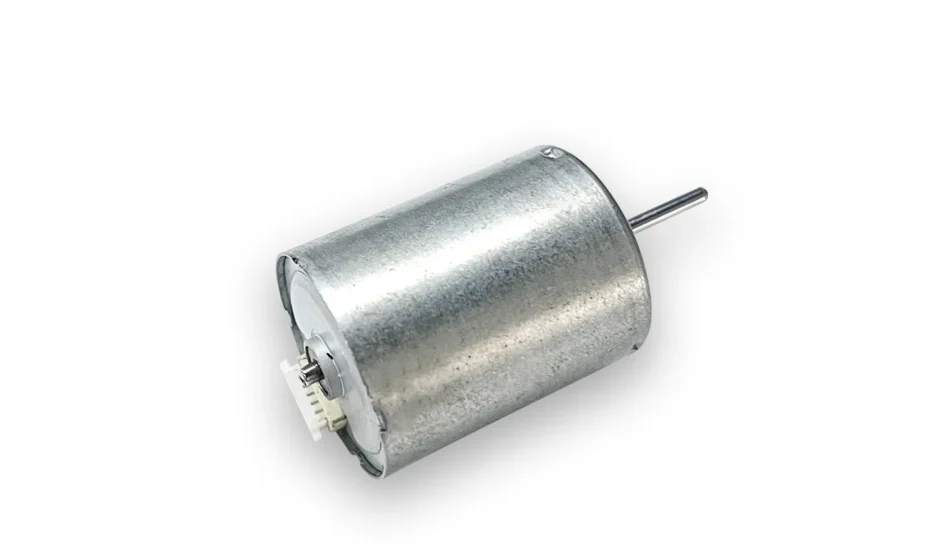When it comes to efficient, reliable, and compact electric motors, the BLDC motor stands out as a popular choice in various applications, including robotics, automotive systems, and household appliances. Whether you’re looking at large-scale industrial uses or small-scale devices like a micro motor, understanding the main components of a BLDC motor is crucial for engineers, hobbyists, and buyers alike. This article explores the key parts that make a BLDC motor work and highlights why companies like Kinmore Motor are trusted names in the field.
What Is a BLDC Motor?
Before diving into the components, it helps to clarify what a BLDC motor is. BLDC stands for Brushless Direct Current motor. Unlike traditional brushed motors, BLDC motors use electronic controllers instead of brushes to switch the current in the motor windings, providing higher efficiency, reduced noise, and longer lifespan.
What Are the Main Components of a BLDC Motor?
A BLDC motor consists of several essential parts that work in unison to produce smooth and efficient motion. These components include the stator, rotor, windings, permanent magnets, electronic controller, and sensors. Let’s examine each one in detail.
1. Stator: The Stationary Core of the Motor
The stator forms the fixed part of the motor and is usually made up of laminated iron cores with multiple slots. These slots house the copper windings. In a BLDC motor, the stator is responsible for creating a rotating magnetic field when electric current passes through its windings.
The quality and design of the stator directly affect the motor’s performance. For example, in compact applications such as a micro motor, the stator is engineered to optimize space while maintaining magnetic efficiency. Leading manufacturers like Kinmore Motor use advanced materials and precision manufacturing to ensure the stator delivers maximum output with minimal losses.
2. Rotor: The Rotating Element
The rotor is the part of the motor that rotates, driven by the magnetic forces generated by the stator. In a BLDC motor, the rotor usually contains permanent magnets mounted on its outer surface. These magnets interact with the stator’s electromagnetic field to create torque.
The strength and arrangement of the permanent magnets are critical for motor performance. High-quality magnets ensure consistent torque, reduced cogging (jerky movement), and improved efficiency. This is especially important in micro motors where precision and smoothness are key.
3. Windings: The Copper Coils That Generate Magnetic Fields
The windings are coils of copper wire wrapped around the stator poles. When electrical current flows through these windings, they generate magnetic fields that interact with the rotor’s permanent magnets. This interaction causes the rotor to turn.
In BLDC motors, the windings are typically arranged in three phases, allowing for precise control of the magnetic field. Proper winding configuration affects torque output, speed control, and overall motor efficiency.
4. Permanent Magnets: The Source of Magnetic Force
Permanent magnets in the rotor provide a constant magnetic field that interacts with the magnetic field generated by the stator windings. These magnets are usually made of rare-earth materials like neodymium, which provide strong magnetic fields in small sizes.
The choice and placement of permanent magnets impact the motor’s power density and efficiency. This is a key consideration when designing both standard BLDC motors and specialized micro motors used in medical devices or small gadgets.
5. Electronic Controller: The Brain of the Motor
The electronic controller replaces the mechanical commutator and brushes found in traditional DC motors. It switches current in the motor windings based on rotor position feedback, allowing the motor to run smoothly and efficiently.
The controller uses algorithms to determine the timing and sequence of current switching. This control is vital for speed regulation, torque control, and energy efficiency. In modern BLDC motor systems, the controller also handles protection features like overcurrent and overheating prevention.
6. Sensors: Position Detection for Precise Control
Many BLDC motors use sensors such as Hall-effect sensors or rotary encoders to detect the rotor’s position. This information allows the electronic controller to energize the correct windings at the right time, ensuring smooth and efficient operation.
In some micro motor, sensorless control methods rely on back-EMF (electromotive force) detection instead of physical sensors, which can reduce size and cost. However, sensor-based systems generally provide better performance in terms of precision and responsiveness.
Why Are These Components Important in a Micro Motor?
In applications requiring extremely small motors, such as drones, medical instruments, or miniature robotics, every component must be optimized for size without sacrificing performance. The micro motor variant of the BLDC motor uses miniaturized stators, rotors, and magnets but still relies on the same fundamental components described above.
Manufacturers like Kinmore Motor specialize in creating micro motors that maintain high efficiency and durability despite their small size. They use advanced materials and microfabrication techniques to ensure these motors meet the demanding requirements of modern technology.
How Do These Components Work Together?
The interaction between the stator windings and rotor magnets is the heart of the BLDC motor’s operation. The controller energizes the windings in a specific sequence based on the rotor’s position, causing the rotor to follow the magnetic field created by the stator. The sensors provide feedback to the controller, enabling real-time adjustments for smooth rotation.
This precise coordination results in a motor that offers high torque, excellent speed control, and minimal maintenance due to the absence of brushes. Whether the motor is a full-sized BLDC motor or a compact micro motor, these principles remain consistent.
What Are the Benefits of Understanding These Components?
For engineers designing motor-driven systems, knowing the main components of a BLDC motor helps optimize motor selection and integration. It also aids troubleshooting and enhances the ability to customize motors for specific applications.
Consumers benefit too, as awareness of these components can guide purchasing decisions, especially when looking for trusted brands. Companies like Kinmore Motor provide detailed specifications and high-quality components, ensuring reliable performance in a wide range of products.
Conclusion: What Makes a BLDC Motor Exceptional?
The main components of a BLDC motor — stator, rotor, windings, permanent magnets, electronic controller, and sensors — each play a vital role in the motor’s superior performance. This design eliminates the drawbacks of brushed motors, offering enhanced efficiency, longer life, and better control.
In specialized applications like micro motors, the precision engineering of these components becomes even more critical. Brands like Kinmore Motor demonstrate industry leadership by delivering BLDC motors that combine cutting-edge technology with robust design.
Whether you’re selecting a motor for industrial use, a micro motor for a precision device, or simply want to understand how BLDC motors work, knowing these components offers valuable insight into the technology powering modern electric devices.



